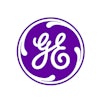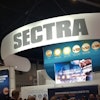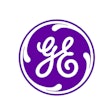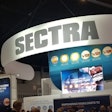Despite their promise, the implementation of high-quality medical videoconferencing sytems used to support dynamic medical imaging has been slow. The ability to manipulate these studies in two locations at the same time usually requires high-bandwidth connections or lossy compression, which may be inadequate for many clinical applications.
In an effort to improve functionality and broaden the appeal of long-distance consulting, researchers from the University of California, San Francisco, and Stanford University Medical Center in Stanford, CA, have developed a teleconsultation and teleconferencing system that uses a store-and-forward approach to image distribution. According to an article in the latest issue of RadioGraphics (Sept. 2000, Vol.20:5, pp.1495-1503), the system offers real-time videoconferencing capabilities with high-quality, dynamic intravascular ultrasound and cardiac angiography images over a low-bandwidth connection.
The system was conceived as a solution to wasted travel time. Cardiologists at UCSF and Stanford, 30 miles away from each other, had been holding educational conferences to present interventional cases with intravascular ultrasound and cardiac angiography studies. The doctors wanted to create a teleconferencing system that would eliminate travel between the institutions while maintaining the same level of quality and interactivity as a conventional meeting.
Since the conferences were scheduled in advance, the researchers decided that a store-and-forward method would be the best approach, as there would be sufficient time to transmit all of the images in time for the conference. However, the team couldn't find a system that was capable of handling dynamic images stored in two locations, so they decided to develop their own. The videoconferencing system was based on the existing teleconsultation system for static radiologic images.
The researchers found that the combination of off-line transmission of dynamic images and real-time synchronized playback offered a number of benefits over videoconferencing with real-time video transmission.
"First and foremost, the store-and-forward technology allows use of high-resolution dynamic images with their original quality preserved, whereas videoconferencing systems allow use of only low-quality compressed images due to bandwidth limitations," the authors wrote.
The researchers decided to employ Microsoft’s DirectShow, a general-purpose multimedia toolkit, which enabled the system to use many different digital video formats, including DICOM and MPEG. As a result, image quality, transmission time delay, and bandwidth requirements could be balanced for optimal cost-effectiveness, they wrote.
The system also allowed for multiple playback of the image data, even though the data was only transmitted once, according to the authors. In contrast, a videoconferencing system offers only one-way communication.
Finally, the system allowed parties at both sites to control the playback process, offering true interactive discussion of the findings. With a videoconferencing system, only one-way communication is possible.
The system does have drawbacks. The store-and-forward technique will never approach the near real-time performance of videoconferencing systems, the group stated.
"Whether this is acceptable depends entirely on the circumstances of the clinical application," the authors wrote. "From our experience, most consultation and conferencing will take place after the examination is completed, in which case the delay created by the store-and-forward process is acceptable and will result in better image quality and increased interactivity."
In addition, there was substantial effort involved in preparing for the conference, mostly because of the digitization of the institutions’ analog intravascular ultrasound tapes. This preparation time should be reduced significantly with the near-term transition to digital, DICOM-compatible ultrasound scanners, according to the authors.
The article outlined three phases of the teleconferencing procedure:
- Data preparation -- DICOM sequences are transmitted over the local area network (LAN) to the teleconferencing workstation, and analog videotapes are digitized, if required.
- Data transmission -- Prior to the conference, the necessary documents are exchanged between the two sites over the wide-area network. At the end of this phase, the workstations in both locations will have identical copies of the images.
- Conferencing -- During the conference, the workstations operate on identical sets of locally stored image data. Since only the control information has to be exchanged, the bandwidth requirements for the conference are very low, and even a dial-up modem of 33.6 Kbps/sec would be sufficient to maintain real-time communication, according to the researchers.
"Compared with commercially available videoconferencing systems, the teleconferencing system we developed can significantly improve image quality and ease of use for certain clinical applications," the authors concluded. "Whether these benefits can lead to more widespread acceptance of such a system in routine clinical practice, and whether teleconferencing itself can enhance the effectiveness of clinical procedures, must be the subject of further investigation with large-scale studies."
By Erik L. RidleyAuntMinnie.com staff writer
September 26, 2000
Let AuntMinnie.com know what you think about this story.
Copyright © 2000 AuntMinnie.com




















